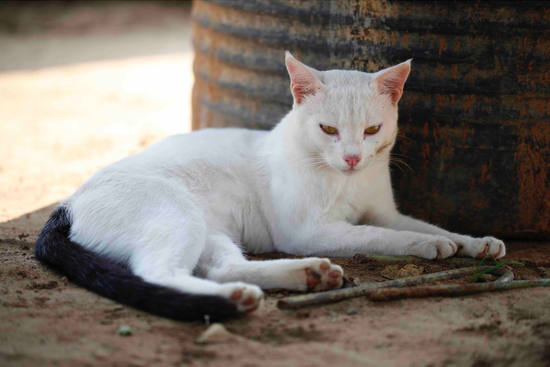
In 2017, the WHO added sporotrichosis to the list of neglected tropical diseases. Sporotrichosis is a primarily cutaneous or lymphocutaneous disease that affects humans, cats, and other mammals. It is caused by fungi in the genus Sporothrix that are found worldwide in soil and plant matter. The primary mode of infection is by traumatic inoculation (e.g., pricks of rose thorns or other plant material on which the fungus is present), and cats can also transmit sporotrichosis directly to cats, humans, and other mammals. Early diagnosis and treatment are critical, as infections generally do not resolve without treatment and can lead to stigma and disability. Prevention methods, including the use of gloves, protective clothing and shoes when handling roses, hay, and sphagnum moss, have the potential to reduce infections. Treatment of sporotrichosis in cats can prevent transmission from animals to humans.
This course is intended to provide basic information for front-line health workers to recognize and treat sporotrichosis. The course will also present notes from the field to demonstrate how this fungal disease is managed in different parts of the world.
Photo credit: WHO / G. Ritlewski
Language: English
NTD
Course information
Overview: Sporotrichosis is a subacute to chronic fungal infection that primarily affects the skin and subcutaneous tissue. This fungal disease usually affects healthy individuals, often working in agriculture or with plants or plant materials. It can cause disseminated disease and high mortality in immunocompromised people such as people with advanced HIV disease.
The aim of the course is to provide information on the epidemiology, clinical presentation, diagnosis, and treatment for sporotrichosis. This course is designed to increase knowledge and skills of national program managers and front-line health workers to address this disease. The course also provides notes from the field from several countries to highlight successful approaches to the management of sporotrichosis in different regions.
Course duration: Approximately 1 hour.
Certificates: A Certificate of Achievement will be issued to participants who score at least 80% of the total points available in the final assessment. Participants who receive a certificate of achievement can also download an Open Badge for this course. Click here to learn how.
What you'll learn
- Characterise the geographical distribution of sporotrichosis.
- Identify common clinical presentations of sporotrichosis.
- Outline different laboratory techniques to identify fungi that cause sporotrichosis.
- Recall treatment and non-pharmacological interventions for sporotrichosis.
- Recognize the impact stigma has to the social well-being of patients with sporotrichosis.
- Describe the public health interventions used to limit the transmission of sporotrichosis.
- Indicate how different countries are addressing sporotrichosis in their regions.
Course contents
Module 1: Welcome to the course; Introduction to NTDs, Skin NTDs, and Sporotrichosis:
This introductory module gives an overview of the neglected tropical diseases (NTDs), skin-NTDs, and sporotrichosis. By the end of the module, you will: explain general information related to NTDs, skin NTDs, and a general overview of sporotrichosis. By the end of this module, you will outline the course structure and the scope of each module.Module 2: Epidemiology and Clinical presentation:
By the end of the module, you will summarise the distribution, burden, causative organisms, risk factors, and transmission routes of sporotrichosis. You will also describe the clinical features to guide diagnosis, body sites affected, and common differential diagnoses.Module 3: Laboratory diagnosis; Management and Treatment:
By the end of this module, you will recall different laboratory tests, common histopathology findings, and methods of sample collection. You will also define the treatment to give to patients, dosages, side effects, other non-pharmacological therapy, and how to identify when to stop treatment.Module 4: Stigma and Public Health Interventions Stigmatization and Socioeconomic Impact:
By the end of this module, you will recognize the negative impact sporotrichosis can have on patients and their families, the cost of long-term treatment, disability, and stigma associated with the fungal disease. You will also indicate the One Health approaches and public health interventions used to limit the transmission of sporotrichosis and the ways these are informed by clinical staff.Module 5: Notes from the Field:
By the end of this module, you will identify how healthcare workers in Brazil and South Africa control and manage sporotrichosis in their respective countries.
Enroll me for this course
Certificate Requirements
- Gain a Record of Achievement by earning at least 80% of the maximum number of points from all graded assignments.
- Gain an Open Badge by completing the course.